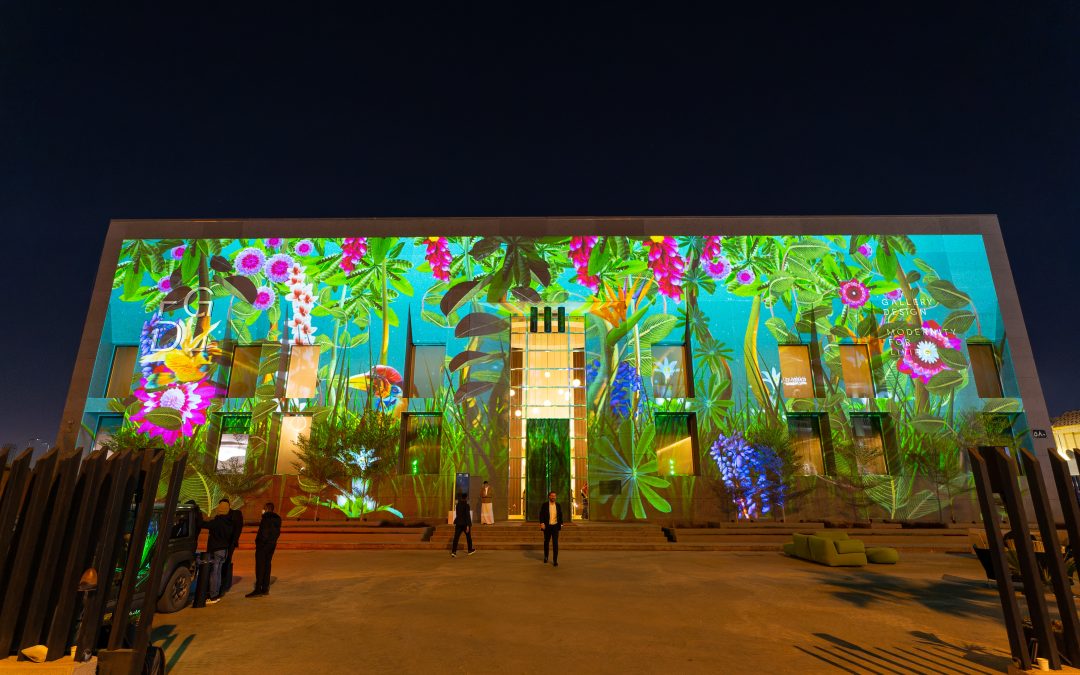In an increasingly experience-driven world, the art of staging live events has taken on a new dimension, with the use of cutting-edge technology. One such groundbreaking technique that has revolutionized live events is the strategic use of projection mapping.
In this article, we will dive into the world of projection mapping, exploring its various facets and discussing how it can be leveraged to create awe-inspiring, immersive, and memorable live experiences for audiences.
What is Projection Mapping?
Projection mapping is a technique that uses multiple projectors to transform any surface into a dynamic display. This can range from entire buildings and their facades to stages, and even irregularly shaped objects and surfaces.
Projection mapping has emerged as a powerful tool that combines artistry with technology, and it involves the precise alignment of projectors to targeted surfaces. Complex software is used to adapt the content being projected to the specific contours and dimensions of the surfaces. This alignment creates the illusion of movement and interactivity, making the audience feel like they are part of a staged spectacle.
Use Cases for Live Events
-
Concerts and Music Festivals
Projection mapping adds a new layer of excitement to live performances. Musicians and artists use it to create visually stunning and immersive experiences that captivate and engage audiences. Dynamic storytelling through visuals and transforming static objects into interactive elements have continually proven to improve audience engagement levels – and adapting this concept to apply to live performances is a creative method that can leverage the power of technology to enhance an event.
-
Product Launches
When introducing a new product to the market, projection mapping can be used to create a captivating product reveal. In an era of brand sponsorships and paid advertisements, the product reveal remains the absolutely crucial moment of a product launch event. Banking on the importance of this moment, a unique format of presentation can be found using projection mapping techniques to build excitement.
-
Cultural Events
From public art installations, and national celebrations, to festival launches, projection mapping is used to create a sense of unity and excitement in large communities. Following general themes in relation to an event, projection mapping shows can flexibly offer a visual entertainment source to its audience.
For example, BeWunder collaborated with Gallery Design and Kunzberg during the Saudi Design Festival 2023, to deliver a custom projection mapping show called Gallery Scapes. The show was conducted by aligning our gear to project onto the façade of the Gallery Design building, and the content provided by Kunzberg, an experiential design company, created a 3D projection show that playfully used the geometry of the building to depict ideas emerging from geometric elements.
-
Conferences and Trade Shows
Projection mapping helps businesses stand out in crowded industry events such as trade shows and conferences. The use of projection mapping techniques in these niches’ events and markets, coupled with demographic-catered content acts as an innovative method to make your brand experience and product trial a memorable interaction.
Challenges in Execution
-
Technical Expertise
Effective and impactful projection mapping requires technical expertise and appropriate equipment. Event Planners need to collaborate with video technology and lighting experts to achieve the desired outcome of a complex projection mapping show.
-
Cost and Budgeting
Projection mapping can be expensive and needs to be budgeted for the equipment, software, surface preparation, and skilled professionals required to execute their vision.
-
Venue Compatibility
Not all venues and surfaces are easily conducive to projection mapping techniques, so event professionals must carefully consider and evaluate the suitability of their chosen location.
FAQs
Q: How can projection mapping be used in smaller-scale live events?
A: Projection mapping techniques are scalable and can be tailored to fit events of any size. In smaller events, it can be used to create immersive backdrops, enhance presentations, or even transform tabletops and objects with animated visuals.
Q: Are there any limitations to projection mapping technology?
A: The effectiveness of projection mapping can be impacted by ambient lighting, the quality of projectors, and the complexity of the surfaces to be mapped on. Proper planning and technical expertise are essential to overcome these challenges.
Q: How can good returns be ensured with the use of projection mapping in events?
A: To achieve a return on investment, businesses should align their projection mapping efforts with clear marketing and branding objectives. The content displayed during projection mapping shows must resonate with the audience and create a lasting impact, ensuring that the event achieves its intended goals.
Conclusion
Projection mapping has redefined the way live events are designed and experienced. From technical intricacies to its boundless creative potential, projection mapping is an invaluable tool for event professionals who want to create immersive and visually captivating experiences. By embracing this technology, the boundaries of possibilities in live event design can be redesigned, leaving a lasting impact on your audience and creating memorable moments that resonate beyond the closing show.

